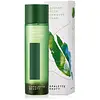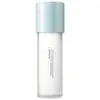What's inside
What's inside
 Key Ingredients
Key Ingredients

 Benefits
Benefits

 Concerns
Concerns

 Ingredients Side-by-side
Ingredients Side-by-side

Camellia Sinensis Leaf Extract
AntimicrobialDipropylene Glycol
HumectantGlycerin
HumectantPropanediol
Solvent1,2-Hexanediol
Skin ConditioningCamellia Sinensis Leaf Water
MaskingPPG-13-Decyltetradeceth-24
EmulsifyingHydroxyacetophenone
AntioxidantCamellia Sinensis Leaf Powder
ExfoliatingCaprylyl Glycol
EmollientButylene Glycol
HumectantWater
Skin ConditioningCarbomer
Emulsion StabilisingTromethamine
BufferingCinnamomum Camphora Bark Oil
MaskingDisodium EDTA
Gluconolactone
Skin ConditioningCitric Acid
BufferingAllantoin
Skin ConditioningGaultheria Procumbens Leaf Extract
PerfumingPentylene Glycol
Skin ConditioningPelargonium Graveolens Flower Oil
MaskingPogostemon Cablin Leaf Oil
MaskingLitsea Cubeba Fruit Oil
MaskingDipotassium Glycyrrhizate
HumectantCitrus Limon Peel Oil
MaskingRosmarinus Officinalis Leaf Oil
MaskingSalvia Officinalis Oil
MaskingMelaleuca Alternifolia Leaf Oil
AntioxidantTocopherol
AntioxidantCamellia Sinensis Leaf Extract, Dipropylene Glycol, Glycerin, Propanediol, 1,2-Hexanediol, Camellia Sinensis Leaf Water, PPG-13-Decyltetradeceth-24, Hydroxyacetophenone, Camellia Sinensis Leaf Powder, Caprylyl Glycol, Butylene Glycol, Water, Carbomer, Tromethamine, Cinnamomum Camphora Bark Oil, Disodium EDTA, Gluconolactone, Citric Acid, Allantoin, Gaultheria Procumbens Leaf Extract, Pentylene Glycol, Pelargonium Graveolens Flower Oil, Pogostemon Cablin Leaf Oil, Litsea Cubeba Fruit Oil, Dipotassium Glycyrrhizate, Citrus Limon Peel Oil, Rosmarinus Officinalis Leaf Oil, Salvia Officinalis Oil, Melaleuca Alternifolia Leaf Oil, Tocopherol
Water
Skin ConditioningButylene Glycol
HumectantDipropylene Glycol
Humectant1,2-Hexanediol
Skin ConditioningBetaine
HumectantTrehalose
HumectantDiethoxyethyl Succinate
SolventPPG-13-Decyltetradeceth-24
EmulsifyingXanthan Gum
EmulsifyingEthylhexylglycerin
Skin ConditioningParfum
MaskingMentha Arvensis Leaf Extract
MaskingDisodium EDTA
Hydrolyzed Hyaluronic Acid
HumectantPropanediol
SolventGluconolactone
Skin ConditioningAureobasidium Pullulans Ferment
Skin ConditioningLactobacillus/Soybean Ferment Extract
Skin ConditioningYeast Ferment Extract
Skin ConditioningTocopherol
AntioxidantUndaria Pinnatifida Extract
Skin ConditioningWater, Butylene Glycol, Dipropylene Glycol, 1,2-Hexanediol, Betaine, Trehalose, Diethoxyethyl Succinate, PPG-13-Decyltetradeceth-24, Xanthan Gum, Ethylhexylglycerin, Parfum, Mentha Arvensis Leaf Extract, Disodium EDTA, Hydrolyzed Hyaluronic Acid, Propanediol, Gluconolactone, Aureobasidium Pullulans Ferment, Lactobacillus/Soybean Ferment Extract, Yeast Ferment Extract, Tocopherol, Undaria Pinnatifida Extract
 Reviews
Reviews

Ingredients Explained
These ingredients are found in both products.
Ingredients higher up in an ingredient list are typically present in a larger amount.
1,2-Hexanediol is a synthetic liquid and another multi-functional powerhouse.
It is a:
- Humectant, drawing moisture into the skin
- Emollient, helping to soften skin
- Solvent, dispersing and stabilizing formulas
- Preservative booster, enhancing the antimicrobial activity of other preservatives
Butylene Glycol (or BG) is used within cosmetic products for a few different reasons:
Overall, Butylene Glycol is a safe and well-rounded ingredient that works well with other ingredients.
Though this ingredient works well with most skin types, some people with sensitive skin may experience a reaction such as allergic rashes, closed comedones, or itchiness.
Learn more about Butylene GlycolDipropylene Glycol is a synthetically created humectant, stabilizer, and solvent.
This ingredient helps:
Dipropylene glycol is technically an alcohol, but it belongs to the glycol family (often considered part of the ‘good’ alcohols). This means it is hydrating and gentle on skin unlike drying solvent alcohols like denatured alcohol.
As a masking agent, Dipropylene Glycol can be used to cover the smell of other ingredients. However, it does not have a scent.
Studies show Dipropylene Glycol is considered safe to use in skincare.
Learn more about Dipropylene GlycolDisodium EDTA plays a role in making products more stable by aiding other preservatives.
It is a chelating agent, meaning it neutralizes metal ions that may be found in a product.
Disodium EDTA is a salt of edetic acid and is found to be safe in cosmetic ingredients.
Learn more about Disodium EDTAGluconolactone is a PHA. PHAs are a great gentle alternative to traditional AHAs.
When applied, Gluconolactone has the same affect on skin as AHAs such as lactic acid. It helps dissolve the dead skin cells in the top layer of your skin. This improves texture and brightens the skin.
PHAs are more gentle than AHAs due to their larger structure. They do not penetrate as deeply as AHAs and take a longer time to dissolve dead cells. Studies show PHAs do not cause as much irritation.
Gluconolactone has some interesting properties:
In a 2004 study, Gluconolactone was found to prevent UV damage in mouse skin cells and has not been found to increase sun sensitivity. However, we still recommend wearing SPF daily.
This ingredient is is an created by reacting gluconic acid with an alcohol.
Learn more about GluconolactoneWe don't have a description for PPG-13-Decyltetradeceth-24 yet.
Propanediol is an all-star ingredient. It softens, hydrates, and smooths the skin.
It’s often used to:
Propanediol is not likely to cause sensitivity and considered safe to use. It is derived from corn or petroleum with a clear color and no scent.
Learn more about PropanediolTocopherol (also known as Vitamin E) is a common antioxidant used to help protect the skin from free-radicals and strengthen the skin barrier. It's also fat soluble - this means our skin is great at absorbing it.
Vitamin E also helps keep your natural skin lipids healthy. Your lipid skin barrier naturally consists of lipids, ceramides, and fatty acids. Vitamin E offers extra protection for your skin’s lipid barrier, keeping your skin healthy and nourished.
Another benefit is a bit of UV protection. Vitamin E helps reduce the damage caused by UVB rays. (It should not replace your sunscreen). Combining it with Vitamin C can decrease sunburned cells and hyperpigmentation after UV exposure.
You might have noticed Vitamin E + C often paired together. This is because it is great at stabilizing Vitamin C. Using the two together helps increase the effectiveness of both ingredients.
There are often claims that Vitamin E can reduce/prevent scarring, but these claims haven't been confirmed by scientific research.
Learn more about TocopherolWater. It's the most common cosmetic ingredient of all. You'll usually see it at the top of ingredient lists, meaning that it makes up the largest part of the product.
So why is it so popular? Water most often acts as a solvent - this means that it helps dissolve other ingredients into the formulation.
You'll also recognize water as that liquid we all need to stay alive. If you see this, drink a glass of water. Stay hydrated!
Learn more about Water